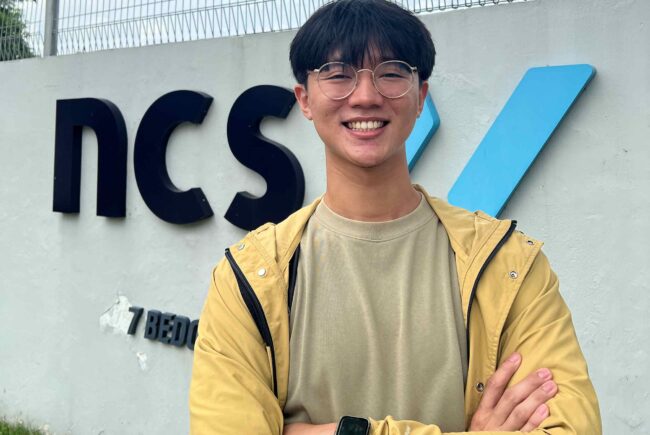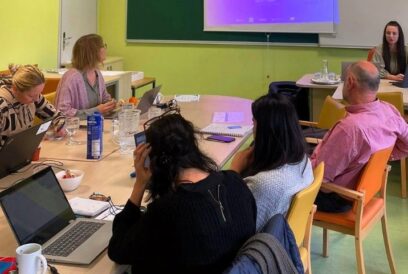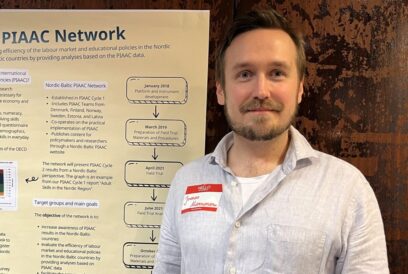

For student Benjamin Tan, the micro-credential model has offered greater flexibility and room for a career boost. Photo: Pia Heikkilä.
Singapore’s micro-credential programme gives a chance to update skills in a flexible way
Published:For student Benjamin Tan, the micro-credential model has offered greater flexibility and room for a career boost. Photo: Pia Heikkilä.
Singapore’s SIT has come up with a way for professionals to update their skills competency with independence, whilst working full time. Stackable credits offer a pathway to short courses or full degrees.
The Singapore Institute of Technology (SIT) is working with industry partners and educational institutions to help people to upgrade their skills. NCS, Singtel, Singapore Computer Society, Nanyang Polytechnic, Singapore Polytechnic and Temasek Polytechnic have jointly started a micro-credentials-based programme, which aims to provide a way for working adults to continually upgrade their skill set and stay relevant in their fields.
The programme, which began in 2023, is set to continue this year and beyond.
“We have received overwhelming interest both from industry and learners,” said Associate Professor Forest Tan from the Singapore Institute of Technology.
The pathway offers flexibility for working adults who cannot commit several years to complete higher-level certifications, such as a degree.
They help to boost Singapore’s IT talent pool and respond to the country’s skills shortage.
Micro-credentials can be earned alone, or they are stackable towards a university degree. Aside from benefitting the student with up-to-date industry knowledge and skills, the idea can also help Singapore, Forest Tan noted.

“We wanted to make learning available in bite-sized chunks, so that the students are able to apply what they’ve studied into the job that they’re doing,” Forest Tan says. Photo: Pia Heikkilä.
“Applied computing, for example, is a good test case because Singapore has a huge demand for IT talent and a shortage of skilled workers. We need to look into the curation of the demand into areas that Singapore is trying to develop,” Forest Tan said.
Greater flexibility and independence
For student Benjamin Tan, the micro-credential model offers greater flexibility and room for a career boost. Working as a network engineer at the international tech company NCS Group, he is currently taking micro-credentials in applied computing.
“There was a need to update my skills. I wanted to specialise in cybersecurity, as I think it would help my current role and the course really resonated with me,” he said.
Tan said that learning to juggle his studies with work at an early age is helping him to deal with the workload.
“Growing up, I always had a part-time job ever since I was 12. It helped me to learn things that I would have not learnt at school and gave me a hands-on approach,” he said.
Combining work and study has helped me to adapt to learning and understand my competencies better.
The micro-credentials are organised into blocks that help learners like Benjamin Tan to achieve knowledge and skills in a particular area, such as cybersecurity, software engineering, or network systems. A single micro-credential usually takes around four months to complete.
According to Benjamin Tan, being able to work and study has helped him to adapt to learning and understand his competencies better.
“The idea is great because it allows students to be financially independent. It’s helpful for someone like me, who needs to earn an income yet wants to study further,” he said.
Experience is power
The concept of micro-credentials has been used in the EU and Australia, but the Singapore model is slightly different. For instance, someone who has no previous knowledge of computing but wants to make a start in it is welcome to join, Forest Tan explained.
“Our focus is competency-based; we allow people with different levels to come in and study,” the associate professor added.
“If the learner comes in with a certain level of expertise, they can, for example, go directly into the next level with the help of prior learning, so that it requires a shorter time to finish the course,” he said. People come from all walks of life, yet their learning experience is supported regardless of their background.
“We recognise that people who are working in a company actually acquire a lot of knowledge and experience during work,” Forest Tan said.
People come from all walks of life, yet their learning experience is supported regardless of their background.
SIT wants to motivate students beyond gaining a piece of paper.
“We really wanted to make learning available in bite-sized chunks, so that people actually get the joy of learning, and they actually have the ability to apply what they’ve studied into the job that they’re actually doing,” Forest Tan said.
This also benefits the employer, as companies accumulate know-how and help the personal development of the individual. Working adults can acquire new competencies to take on larger roles in a company or deepen their knowledge in new technologies.
The IT industry in particular is evolving fast, and its demands are changing.
“It is always good to pick up new skills in this industry and having a professional certification gives me an advantage,” Benjamin Tan said.
Author







